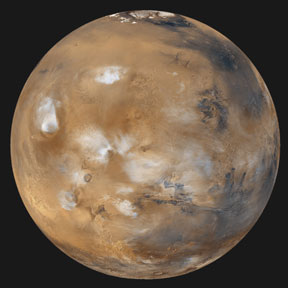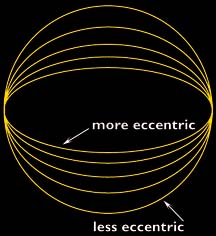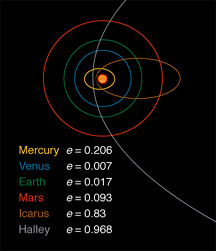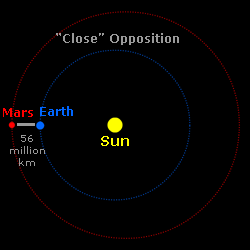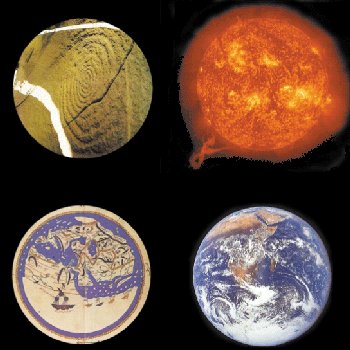Click on image for full size
Image courtesy NASA/JPL.
Mars Opposition on October 30, 2005
News story originally written on September 22, 2005
The planet Mars will be much closer to Earth than it normally is at 0319 Universal Time on October 30, 2005. Earth and Mars will pass within 69 million km (43 million miles) of each other, and Mars will be very bright in the sky. Mars won't look any larger than normal if you view it with your naked eye (that is, without a telescope or binoculars)... it will look like a very bright, red star.
Planets that are closer to the Sun move faster than planets further away. Since Earth is closer to the Sun than Mars is, Earth passes Mars about once every 26 months. The situation is similar to a fast race car passing a slower car on the "inside lane" of an oval racetrack. When Earth passes Mars, astronomers call the event an "opposition". During an opposition, the Sun, Earth, and Mars form a straight line, with Mars on the opposite side as the Sun as viewed from Earth. Not all oppositions are created equal. Since Mars's orbit is elliptical or oval-shaped (unlike Earth's, which is nearly a perfect circle), some oppositions bring the two planets closer together than others. "Close" oppositions occur when Earth passes Mars at the point in Mars's orbit when Mars is closest to the Sun.
Check out this interactive animation of the orbits of Earth and Mars to see where the planets are right now.
The closest Mars opposition in thousands of years happened on August 27, 2003, when the planets passed within 56 million km (35 million miles) of each other. Really "close" oppositions generally happen once every 15 or 17 years. The next especially close Mars opposition will be in July of 2018. If you missed the 2003 opposition, you won't have to wait thousands of years for an even better view. Mars will have an opposition even closer than the 2003 event on August 28, 2287!


